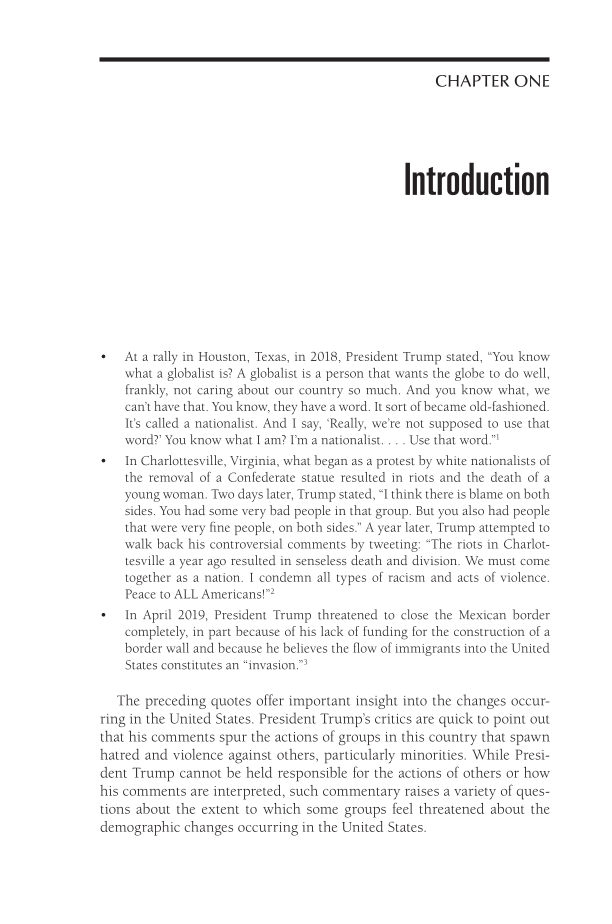CHAPTER ONE Introduction • At a rally in Houston, Texas, in 2018, President Trump stated, “You know what a globalist is? A globalist is a person that wants the globe to do well, frankly, not caring about our country so much. And you know what, we can’t have that. You know, they have a word. It sort of became old-fashioned. It’s called a nationalist. And I say, ‘Really, we’re not supposed to use that word?’ You know what I am? I’m a nationalist. . . . Use that word.”1 • In Charlottesville, Virginia, what began as a protest by white nationalists of the removal of a Confederate statue resulted in riots and the death of a young woman. Two days later, Trump stated, “I think there is blame on both sides. You had some very bad people in that group. But you also had people that were very fine people, on both sides.” A year later, Trump attempted to walk back his controversial comments by tweeting: “The riots in Charlot- tesville a year ago resulted in senseless death and division. We must come together as a nation. I condemn all types of racism and acts of violence. Peace to ALL Americans!”2 • In April 2019, President Trump threatened to close the Mexican border completely, in part because of his lack of funding for the construction of a border wall and because he believes the flow of immigrants into the United States constitutes an “invasion.”3 The preceding quotes offer important insight into the changes occur- ring in the United States. President Trump’s critics are quick to point out that his comments spur the actions of groups in this country that spawn hatred and violence against others, particularly minorities. While Presi- dent Trump cannot be held responsible for the actions of others or how his comments are interpreted, such commentary raises a variety of ques- tions about the extent to which some groups feel threatened about the demographic changes occurring in the United States.
Document Details My Account Print multiple pages
Print
You have printed 0 times in the last 24 hours.
Your print count will reset on at .
You may print 0 more time(s) before then.
You may print a maximum of 0 pages at a time.














































































































































































































































